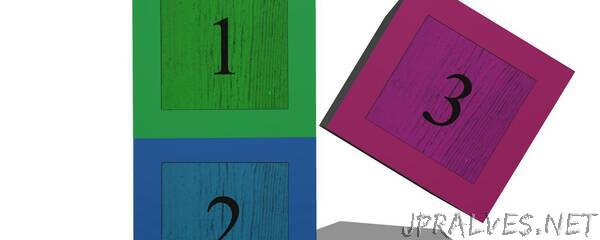
“Children who develop a deeper understanding of numbers at preschool age become better at mathematics than those who learn to count forwards and backwards one step at a time. This is the finding of research carried out at the University of Gothenburg, which has also tested different methods for teaching mathematics.
The most common way for children to learn mathematics is by using the number sequence and counting forwards and backwards one step at a time. For example, to add six and two, they start at six and count up on their fingers to seven and then eight. However, this method of counting only works for simple tasks.
More advanced calculations require a deeper understanding. Researchers at the University of Gothenburg have therefore worked with preschool teachers to try to ‘skip counting on the number sequence and instead base their teaching on seeing numbers as a relation of parts and whole. For example, six and two are parts of the whole eight.
“It involves even very young children getting a deeper understanding of numbers,” explains Camilla Björklund, a Professor in Education at the University of Gothenburg. “We have used methods that give children experience of seeing numbers, and perceiving numbers as being made up of parts.”
Mathematical narratives
Five preschools took part in the project.
“We have embedded maths into play and games,” adds Angelika Kullberg, a Professor in Subject Didactics, specialising in mathematics, who led the project together with Professor Björklund.
For example, preschool teachers told a story about eight elephants who are out walking, when three of the elephants suddenly run away. While listening to the story, the children use their fingers to visualise what happens. In doing so, they see in very concrete terms that the number eight consists of five and three, and that taking away three leaves five.
“We use our fingers,” says Professor Kullberg. “But not to count up and down in the traditional way. Instead, it’s a matter of seeing the numbers with the help of fingers. This helps the children to understand and see numbers or parts of numbers. They grasp the principles extremely quickly.”
Another example involved the children experimenting with a ‘ten chain’, which consists of beads grouped in two sets of five on a string. When the teacher covered over some of the beads, the children had to work out how many were hidden.
Clear results
The researchers interviewed and tested 103 children at the participating preschools on three occasions: before the project, at the end of the project and one year after the end of the project. About half the children attended classes in which the methods were tested, with the other half attending regular classes. The results were clear.
“The children in the intervention group could solve addition and subtraction tasks to a higher degree than the control group,” says Professor Björklund. “There were also qualitative differences. The children in the intervention group were considerably better at carrying out complex tasks, had a deeper understanding of numbers and thought in a more abstract way. We know from previous research that these abilities are important in order to continue developing mathematical skills.”
“The children in the intervention group also felt more confident about counting tasks. They had gained a belief that they could solve mathematical problems, and had better self-esteem.”
The differences between the intervention and control groups remained a year after the end of the project, although the differences were somewhat smaller by that time.”
